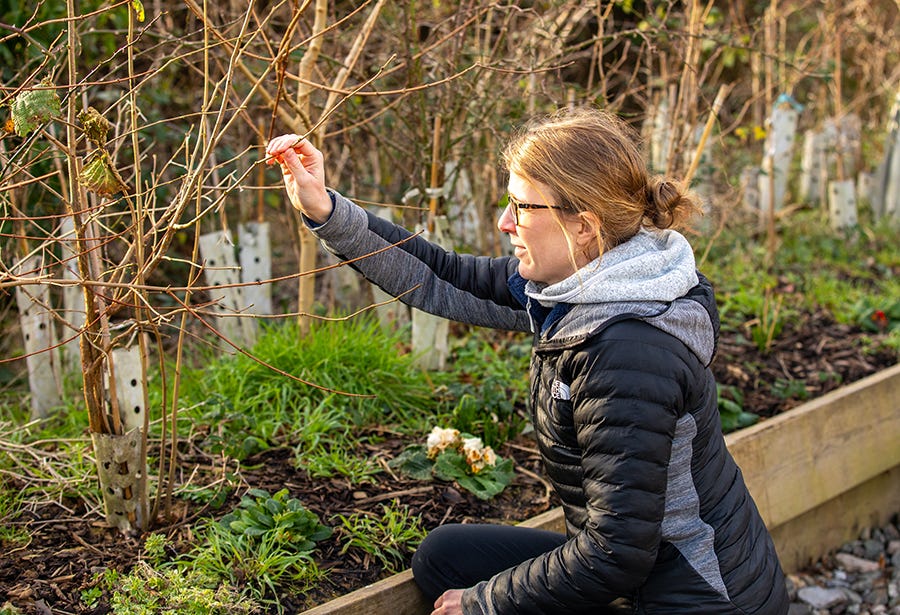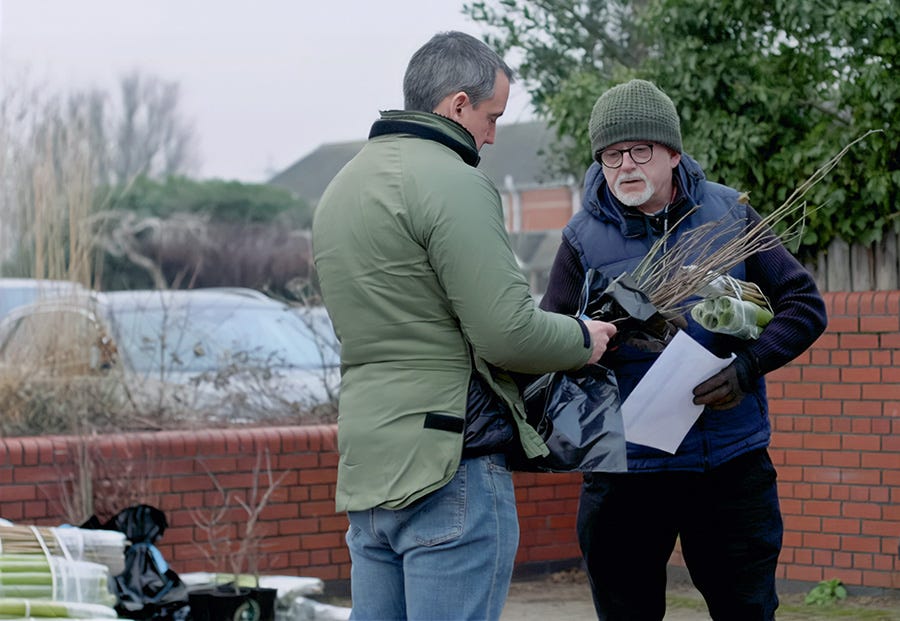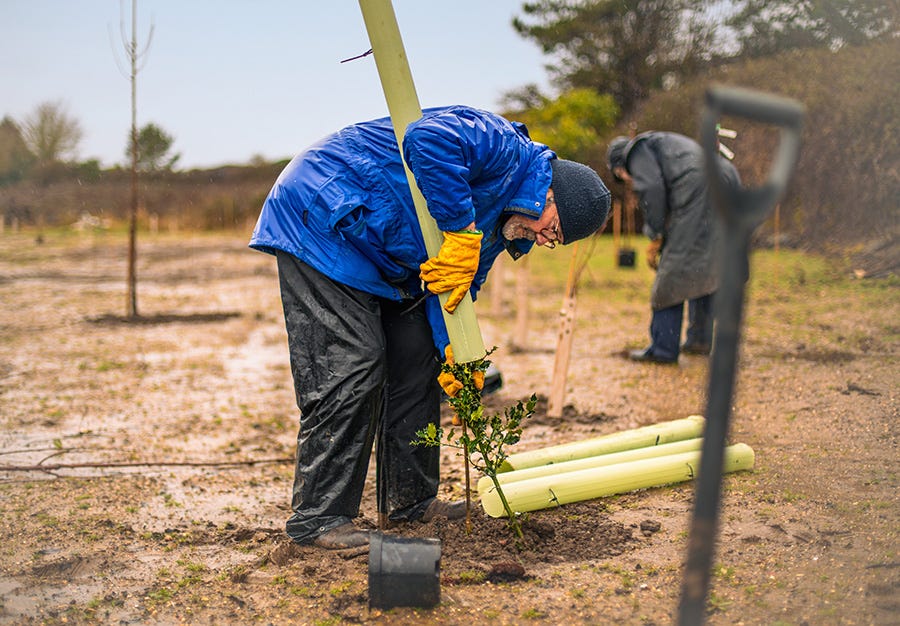Tree giveaways have long been a popular way for councils, charities, and other organisations to distribute trees at scale. For decades, these initiatives have seen thousands of whips handed out for free to residents, schools, businesses and community groups, but how effective are these schemes in ensuring the trees survive?
Our recent pilot in the Trees Outside Woodland project set out to answer this question. We looked into the effectiveness of these schemes at establishing trees, while also exploring whether asking participants for a small financial contribution would affect survival rates.
I am hosting a free online talk and Q&A on Tuesday 18 March if you’re interested and want to hear more about the findings – you can sign up here.
At Chichester District Council, we have played a key role in the project since it launched in 2020. Funded by HM Government’s Shared Outcomes Fund and led by Defra, The Tree Council, and Natural England, alongside four other local authorities, it has sought to explore effective and efficient ways to establish non-woodland trees.
As the Trees Outside Woodland project officer in Chichester district, I led the tree giveaway scheme pilot, comparing two approaches: one in which trees were given away completely free of charge and another where recipients contributed 50% of the cost of the trees, canes and guards. Across the four participating local authorities, 144,000 trees were planted at 1,200 sites.
The most intriguing finding was the difference in survival rates between the two schemes. Trees distributed in the subsidised scheme had a significantly higher one-year survival rate – after one year 88% were alive compared to 83% for the free trees. We don’t have any data yet on why this could be, but it’s possible that because applicants had contributed financially towards the trees, they took care of them a little better, for example by mulching them or watering them during dry spells.
Beyond survival rates, the study also highlighted the cost-effectiveness of subsidised trees. The cost per surviving tree after one year was significantly lower in the subsidised scheme (£1.58) compared to the free scheme (£3.59), largely due to the combination of recipients sharing the cost and higher survival rates.
On collection days for the subsidised trees, there were fewer no-shows, and people didn’t pass their trees on to neighbours or friends as often as we saw with the free scheme. This further adds to the impression that paying a small amount towards the cost increases the sense of ownership that participants feel toward the trees.
Importantly, the type of applicant didn’t differ across the two types of scheme and residents made up the largest group across both schemes. Not put off by having to contribute, this group actually increased in proportion in the subsidised scheme, and schools and charities remained consistent across both. For both the free and subsidised schemes, supporting wildlife was the most frequently cited reason for planting trees.
The research underscores the importance of considering different approaches when designing tree schemes. While free tree giveaways remain valuable for ensuring access for all, incorporating subsidised options can make often-tight local authority budgets go further, contribute more to planting targets and enhance the long-term impact of these programmes. Some local authorities have already begun adjusting their approaches based on these findings.
Our partners at Shropshire Council has begun running subsidised schemes after distributing trees for free for decades, and Norfolk County Council has begun running tree schemes for the first time to help them reach their ambitious tree-planting targets, also opting to ask applicants to contribute toward costs.
As trees are most vulnerable in their early years, ongoing monitoring will be key to understanding long-term survival trends. With an update to our report planned later in 2025, these insights will further shape how tree-planting initiatives can be both effective and sustainable.
It’s very rewarding to think that we’ve contributed valuable information to this space and that by applying these findings, organisations can make the most of their efforts to increase tree planting in their communities, securing our treescape for future generations.
If you want to know more about the results, the schemes we ran, and how we did it, come to our free online talk and Q&A next Tuesday 18 March (12-1pm) or watch the film we made about the pilot.
Sophie Hamnett is the Tree Project Officer at Chichester District Council. To find out more about the Trees Outside Woodland project and read the full tree schemes report, please visit www.treecouncil.org.uk/science-and-research/shared-outcomes-fund/
MORE: Free or subsidised trees? Early indications from our research trials...
Find out more about The Tree Council at treecouncil.org.uk. Sign up to our monthly newsletter The Leaflet, and follow our social accounts: Instagram, TikTok, Facebook, LinkedIN, X/Twitter, YouTube.








